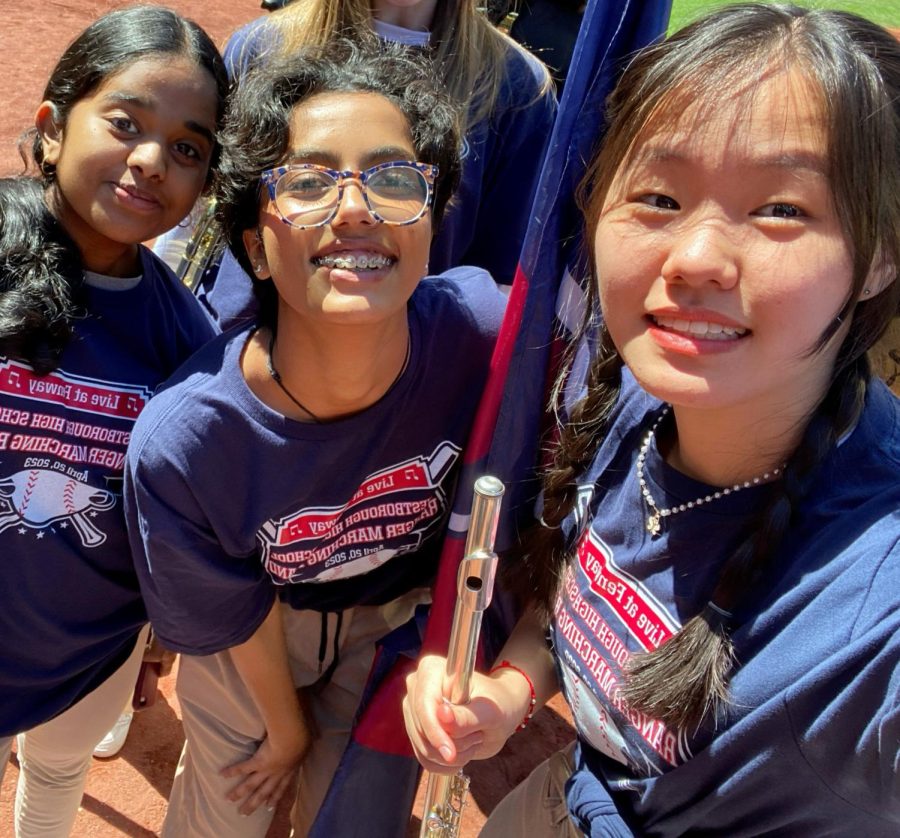Looking Down at the Floor Tiles to Avoid Racism
June 9, 2023
“What would she do?”
“How would she react?”
“What would she say?”
Those are the three questions I have asked myself when it comes to making decisions, communicating, and even when reaching out to someone. It wasn’t until last year that I realized I was asking I myself these questions because I had been trying to be someone else, so I could show the best part of myself to anyone around me.
“It is important for us to wear other’s shoes and think under their circumstances,” said one of my former teachers. At first, I thought of it as a talent of mine: sympathizing with others, only to later realize I wasn’t imagining wearing other’s shoes, I was really wanting to have shoes like like others.
It all started with the hot summer of fifth grade. My family and I had moved back to the U.S.; only this time it was a whole new state and a whole new home. I thought I was special as one of 10 or fewer Asian kids in my elementary school–only to find out that being special was not a good thing.
“Ching chong chong ching,” said a girl who sneaked up behind me and said weird words smugly to me as I waited in line for the bus. I thought it was an everyday slang used at the time, so I smiled awkwardly back. My confusion created laughter and giggles among the girl and her friends. I expected this as a sign of benevolence, a new start of a friendship, but only to realize years later that it was what many had faced across the U.S. and the planet: racism.
That year was a tough start. I was more afraid to stand out, but I soon realized even if I didn’t join in, I would still stick out like peanut in almonds. The next year the class welcomed me with silence and a nice smile on the teacher’s face. The eyes that fell on me were mixed with confusion and surprise. I quickly glanced over the class, and with the most obvious observation, I noted that the room is two colors: black and white.
As one of the few Asian kids in that class, it was disconcerting at first. This unique situation brought questions with curiosity and self-awareness of looking different; when I walked in the hallway by myself, there would always be eyes on me, and special attention from the teacher even if they tried their best to hide it.
It was during art class when I was called out for talking during class. I think I was trying to let my peer grab my pencil. “My pencil was running away,” I told the teacher. The class burst out laughing after a moment of silence. My cheek flushed with redness and my brain went numb as I heard myself being mimicked from the murmurs around me. Students looked at me with wide smiles on their faces saying: “My pencil was running away.” “Was she trying to say rolling?”
My heart filled with embarrassment. I wished that I was small enough to hide inbetween the cracks of the tiles. Of course, in the end, the teacher stopped the chaos, and after that, I was sent to my English as a Second Language class more often than ever.
I understand that sometimes people are just jerks, they say things to make themself superior and funny. But in the end, can emotions like embarrassment and awkwardness stop the earth from spinning? When you are under the spotlight every small mistake magnifies. For a long time, I came to school consciously lowering my head and counting the pattern of the tiles. I tried to fit in by making myself small and unnoticeable. It seems like attention gets less and less when you become the quiet Asian kid.
Things started to change for the better when middle school came around. At the end of the year, we visited the middle school to experience the campus and see extracurricular classes. When the school band performed in the gym, I noticed a self-assured girl from a grade above who was also east Asian. My eyes lit up as I saw her shine while playing the flute. She fit so well with the crowd.
My heart was pounding hard. I couldn’t tell if it was the heart-touching pieces played by the band or the excitement of seeing someone I always dreamt of being. Since then, I started to imitate her from my view: her way of talking barely with an accent and her way of joining a conversation and making friends smoothly. I wished I could be just like her, even though I knew nothing about her other than how she presented herself at the surface.
From there I learned how to observe and emulate.
I copied the way people would joke around their friends and the way people fall into the cycle of changing. I ran and ran to chase that north star of being “her.” In the end, the star is the star and Earth is Earth, I wasn’t really happy with how I was acting.
I can’t wear anyone’s shoes who don’t fit me, but luckily I was able to find out what I truly like on this journey.
I joined the marching band in high school, and for the first time, I was able to find a community that I felt I belonged to–where even people who are different are supportive of each other. Slowly I was able to stand up and look straight walking in the hallways where I knew behind me where there are people and things that I love.
We often look at our reflections in the mirrors and we reflect on our flaws. We judge ourselves with the standards and judgment that society creates, and we try to perfect ourselves based on the reflection when we have only seen ourselves through other people’s reflections. I had wished to become the mirror where I could mimic others to piece out myself, to follow the shiny north star, and imagine becoming that star.
However, I have realized: I already shine in my own way.







